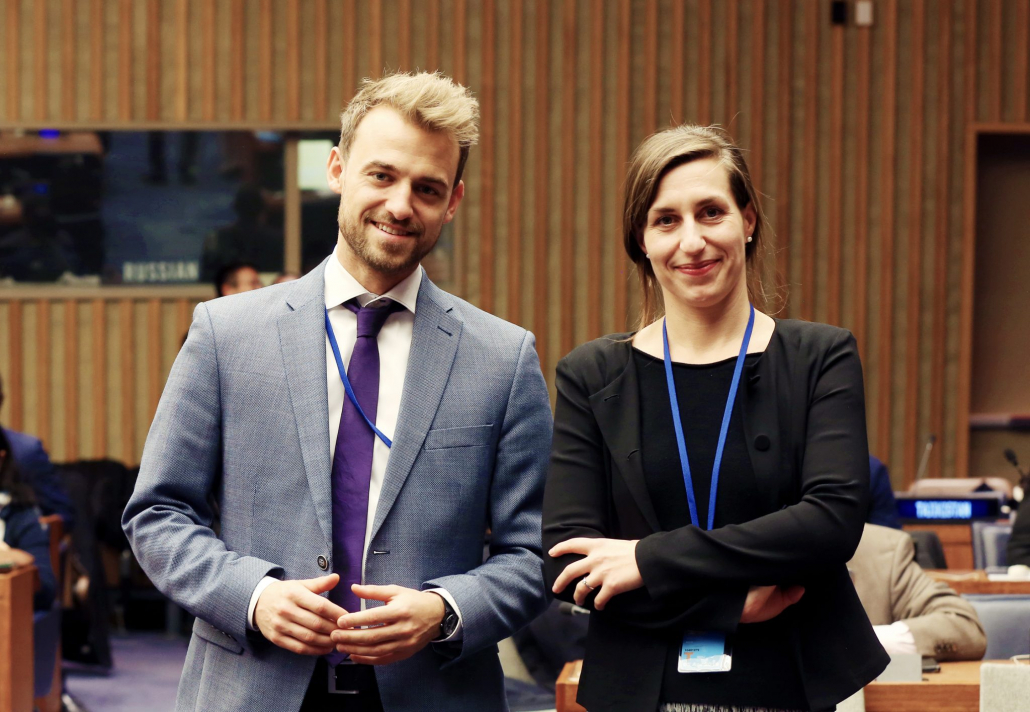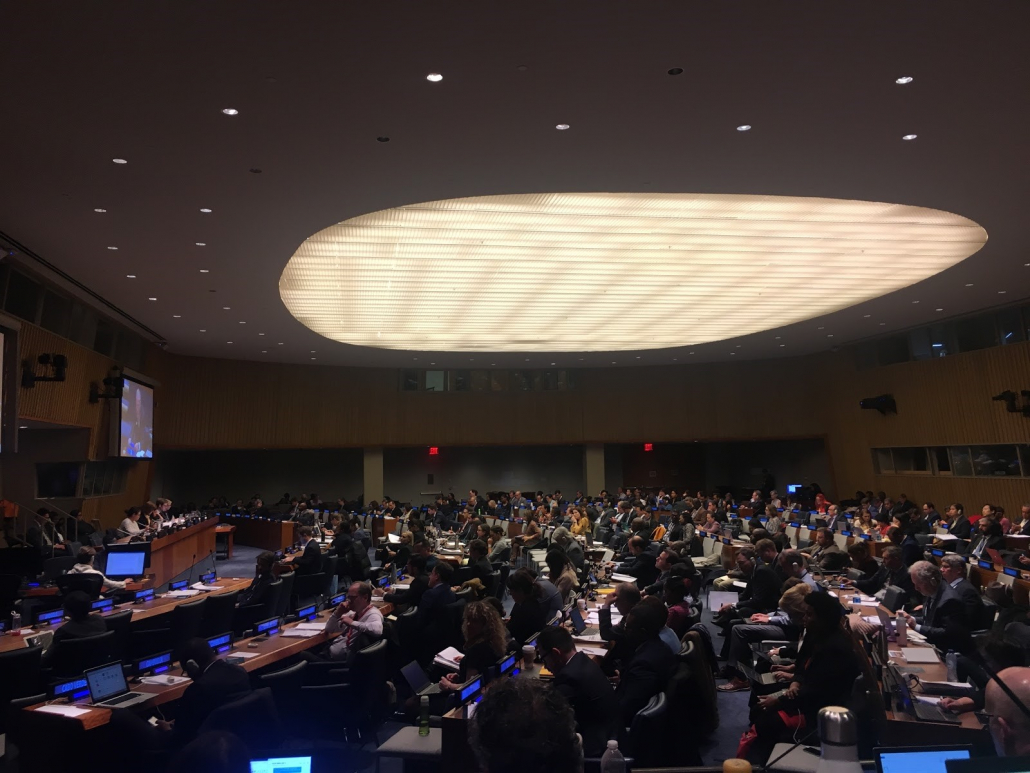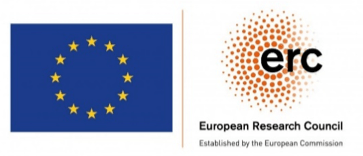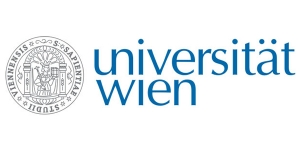Impressions from the second week of BBNJ negotiations and why they became political in the end
From March 25 to April 5, governments met at the UN Headquarters in New York to further advance negotiations on a new legally binding instrument to protect and sustainably use marine biodiversity in areas beyond national jurisdiction (ABNJ). It is expected that by 2020, governments would agree on establishing a new treaty covering four central issues, which are currently not sufficiently regulated under existing maritime law: 1) Marine Genetics Resources (MGR), 2) Area-based Management Tools (AMBTs) as well as Marine Protected Areas (MPAs), 3) Environmental Impact Assessment (EIA), and 4) Capacity Building and Marine Technology Transfer (CB&MTT).
While the overall objective of the treaty is to create a framework to conserve and protect BBNJ, it also carries the potential to act as a vehicle to close substantial gaps between developed and developing countries in exploring and exploiting the oceans. During the first week of negotiations, we observed discrepancies between governments as wide ranging as if the principle of “Common heritage of mankind” should be applied to marine biodiversity in ABNJ or not (see MARIPOLDATA blog from 1st of April). In the following, we will give an account of the second week of negotiations, in which we participated as observers and as part of the delegation of the International Studies Association (ISA).
The second week of negotiations
The second week started off where the first week had ended: with agenda item three Environmental Impact Assessments (EIA) and the idea that some kind of assessment of potentially harmful effects on the health of marine ecosystems and of marine biodiversity should be undertaken before a state or a company may explore, exploit or pursue any activity in ABNJ. The essence of this agenda item tackles “who” is entitled or obliged to undertake “what” kind of assessment, “how” and based on what criteria. Because an EIA would cover areas that are not under the responsibility of a nation state but may be located in close proximity to the Exclusive Economic Zones (EEZs) and national territories of a coastal state, tensions emerged as to who will conduct environmental impact assessments, how and on what.
The potential role of a scientific body
The views of governments on the “who” question, mainly differed in relation to whether it should be a state-driven or a science-driven process. Many governments wished to retain the decision-making power to initiate and conduct EIAs to states themselves; others preferred creating a scientific body, which would receive the authority to independently perform these tasks. Some national delegations, particularly from the group of the Pacific Small Island Developing States (PSIDS) emphasized the concept of adjacency in this context. While adjacency was until now understood as the geographical proximity of a state´s EEZ to the area beyond national jurisdiction which is to be managed, PSIDS argued that, it should not only be understood in terms of geographical, but also ecological proximity. They justified their claim by referring to the concept of “ecological connectivity”.
“Ecological connectivity” can be defined as “a complex natural phenomenon linking various components of marine ecosystems in time and space” (IIED 2019). According to the International Institute for Environment and Development (IIED) “ecological connectivity” between ABNJ and coastal waters occurs via two distinct processes: (1) passive circulation-driven connectivity and (2) migratory connectivity” (ibid). It must be noted that such a definition – although widely accepted in the academic realm – is not yet in the BBNJ draft.
“Fish do not have passports”
While the understanding that animals and water masses in the ocean move and connect large parts of the planet may not sound particularly surprising, it does bring substantial difficulties for the governance of marine biodiversity in ABNJ. It is through side events, organized by NGOs, scientific communities and other stakeholders, that such debates are addressed and discussed in the framework of the BBNJ process. For example, “ecological connectivity” was addressed in more depth during a side event hosted by the International Institute for Environment and Development (IIED). According to Ekaterina Popova from the National Oceanographic Centre in Southampton UK, “ecological connectivity” is a rapidly developing research area, which highlights many aspects that should be considered by policymakers.
Understanding and acknowledging the effects of “ecological connectivity” in this way comes with consequences and questions for policymaking. How should states conserve a population of migratory species that directly crosses the Exclusive Economic Zones (EEZ) of a large number of countries as well as areas beyond national jurisdiction (ABNJ)? This issue was discussed in a side event hosted by the World Conservation Monitoring Centre of the United Nations Environment Programme (UNEP-WCMC). At this occasion Daniel Dunn from Duke University and Steven Fletcher from UNEP- WCMC introduced “Mico”, a platform allowing scientists to jointly investigate migratory connectivity and make this information accessible to everyone. Such research efforts have shown that fish stocks of high seas and in EEZs are interconnected, or as one delegate put it: “fish do not have passports”.
A redistribution of responsibility?
While recognizing “ecological connectivity” in the BBNJ process would significantly increase the scientific credibility and evidence base of a new treaty, it also comes with important consequences for how the responsibilities and duties of states would be distributed. If “ecological connectivity” is included in the instrument, adjacent states would for example play a particular role in assessing impacts of activities in ABNJ, because their EEZs and coastal zones are particularly affected by them, for the good and the bad.
Activity or Impact Based?
The concept of “ecological connectivity” was not only mentioned in the discussion about “who” should be in charge of EIAs but also played a particularly crucial role regarding questions on “what” should be assessed. The room was divided between governments that prefer an activity-based approach – evaluating which activities in ABNJs are harmful to the environment – and an impact-based approach, which would evaluate the potential impacts of any activity on the environment. Assuming that an EIA would be conducted following the impact-based approach and under full recognition of “ecological connectivity”, the regulations for pursuing economic activities on the high seas would become potentially much stricter. In such a case, the state or company would have to demonstrate that the proposed activity would not only be harmless to the area where it will be conducted, but possibly also to all connected species in national waters. In such a case, adjacent states, whose EEZ might be particularly affected would be given a special role in conducting such environmental assessments.
What is the legitimate knowledge to assess the state of our oceans?
Almost all states agreed that environmental impact assessments should be based on the “best available science”. However, there was less agreement if, and if yes to what extent EIAs should rest upon a fixed set of internationally agreed and globally applicable criteria. Should there be a minimum standard for EIAs or a flexible framework to account for already existing regional or national best practices? Or should the opportunity of a new global treaty be used to formulate ambitious criteria to be applied to all EIA on BBNJ? A list of content-requirements for EIA was part of the negotiated text, but could not be agreed upon. While some states argued for a rather thin outline, other governments- specifically from the global south- proposed to include many specific content-requirements such as socioeconomic impacts and the description of alternatives to the proposed activity. Some developing states also highlighted that “best available science” and shared criteria for EIAs also imply that the new treaty should recognize the need of developing countries to be empowered to contribute to the production of ocean science considered for EIAs, especially, if they are based on a specific set of internationally agreed ambitious criteria. Otherwise, many countries would be limited in their contributions to developing a shared scientific knowledge base for EIAs.
This brings us to the question of what counts as legitimate knowledge on biodiversity beyond national jurisdiction. Many governments from the global south, specifically from the group of the like-minded Latin American countries and the Pacific Small Island Developing States argued that traditional knowledge should be equally recognized and integrated into EIA. They highlighted the fact that local and indigenous communities living in coastal areas have developed extensive knowledge on marine biodiversity, because of their dependence on ocean ecosystems and the practices they have developed to live with and from the ocean. They hold knowledge on species diversity and other characteristics of oceans ecosystems, which has been passed from generation to generation over centuries and which therefore should be included into the body of knowledge relevant to EIAs. Those governments that supported the inclusion of TK also argued that what scientists describe by using the term “ecological connectivity” is at the core of what local and indigenous people have experienced and captured with the notion of interconnectivity for a long time: the relation between humankind and the ocean.
Whilst there was agreement that traditional knowledge should not substitute, but complement modern science, governments had different views on how to bridge the gap between those that have advanced scientific and technical infrastructures to conduct ocean science in ABNJ and those that have not.
Capacity building or how to close technology gaps between states
Capacity building and marine technology transfer (CB & MTT) constitute key pillars of the future treaty, particularly from the perspective of developing countries. The distribution of capabilities among states to conduct scientific research in the open ocean are unequally distributed around the globe. Only a few nations such as for example the US, Japan, Australia, Canada and members of the European Union (EU) have established the necessary scientific and technological infrastructures enabling them to systematically study ABNJ and the deep sea. There are no regulations in place, which would limit access to BBNJ for scientific purposes, despite the fact that access is inseparably linked to the capacities to conduct science in these areas. According to many developing states, capacity building should be linked to questions of access in order to account for technology gaps and an unjust distribution of scientific capability. This is also why
developing states support the idea to include the “common heritage of mankind” into the text of the new instrument, because it would support the idea of mandatory and monetary forms of capacity building, which could account for a distribution of benefits resulting from marine scientific research on BBNJ. In contrast, many developed states preferred non-monetary forms of capacity building such as through the sharing of information on research cruises activities and of specific oceanographic data. The views on what falls under capacity building, how detailed the list of tasks should be and how such processes would look like in practice differed significantly and remain to be discussed at the next BBNJ negotiations in August.
How to institutionalize the new treaty
After governments addressed the four packages of the new treaty, they turned to issues related to the implementation and design of the new instrument, including its decision-making body, the establishment of a scientific advisory body and other matters related to the way in which the future treaty should operate. Many governments pointed to the fact that such issues can only be addressed if the content of the treaty is agreed and that duplication with other existing treaties and instruments should be avoided. Nevertheless, some governments showed more willingness to establish a robust and all-encompassing institutional setting than others. While Russia, the US and Japan opted for minimalistic arrangements, many developing states refereed to (elements of) the United National Convention on Climate Change (UNFCCC) and the Convention on Biological Diversity (CBD) as potential role models for the new treaty.
Why negotiations became political towards the end
The second intergovernmental session came slowly to an end. Governments expressed the wish to receive some kind of zero draft containing all options for which there was support during the two weeks of negations as a basis for the third intergovernmental session in August this year. Negotiations started and ended with a very positive atmosphere and despite many divergent views on a number of issues delegates and chairs kept a positive attitude, which everybody present in the room could sense.
The positive spirit was, however reversed abruptly, when a delegate from the EU took the floor on a rather formal and – at the first glance- less contentious issue introduced by the president of the negotiations towards the end: the credentials of governments, which took part in the negotiations. The delegate from the EU started her intervention by questioning the credentials of Venezuela. The room was silent, and delegates were looking at each other seemingly anticipating the reactions that this statement would cause. The delegate of the EU continued and pointed to the current situation in Venezuela, the disputed presidency of Nicolás Maduro and the EU´s support for Juan Gerardo Guaidó Márquez, who is recognized as acting President of Venezuela by 54 governments. Under these circumstances, the Venezuelan participation in these negotiations would not be legitimate. A cascade of interventions from Russia, Syria, Venezuela, Cuba and Nicaragua followed, sharply criticizing the EU for its statement, which would destroy the positive spirit of the BBNJ negotiations and the consensus-oriented process between governments so far. The EU`s statement would contradict the UN principles and the sovereignty of states, which forms a baseline for multilateralism, which the EU would perpetuate by questioning Venezuela’s credentials. It was the first time during the two weeks that Venezuela took the floor in the negotiations, pointing to the sovereignty of its country and the democratic legitimacy of its president. The EU delegate, which made the intervention, was shaking and the tension in the room was remarkable. Subsequently Peru made a statement on behalf of several Latin American countries, Canada, the Czech Republic and other governments proposing that credentials should be accepted, but that these countries share concerns over developments in Venezuela and the legitimacy of Maduro. The president proposed to accept Venezuelan credentials and the issue on credentials was thereafter closed.
While the tensions regarding Venezuela’s credentials came as a surprise for most observers, they unpleasantly reminded us that multilateralism is fragile and symbolic power not as symbolic as one would wish.
This article has been written by Alice Vadrot and Arne Langlet




